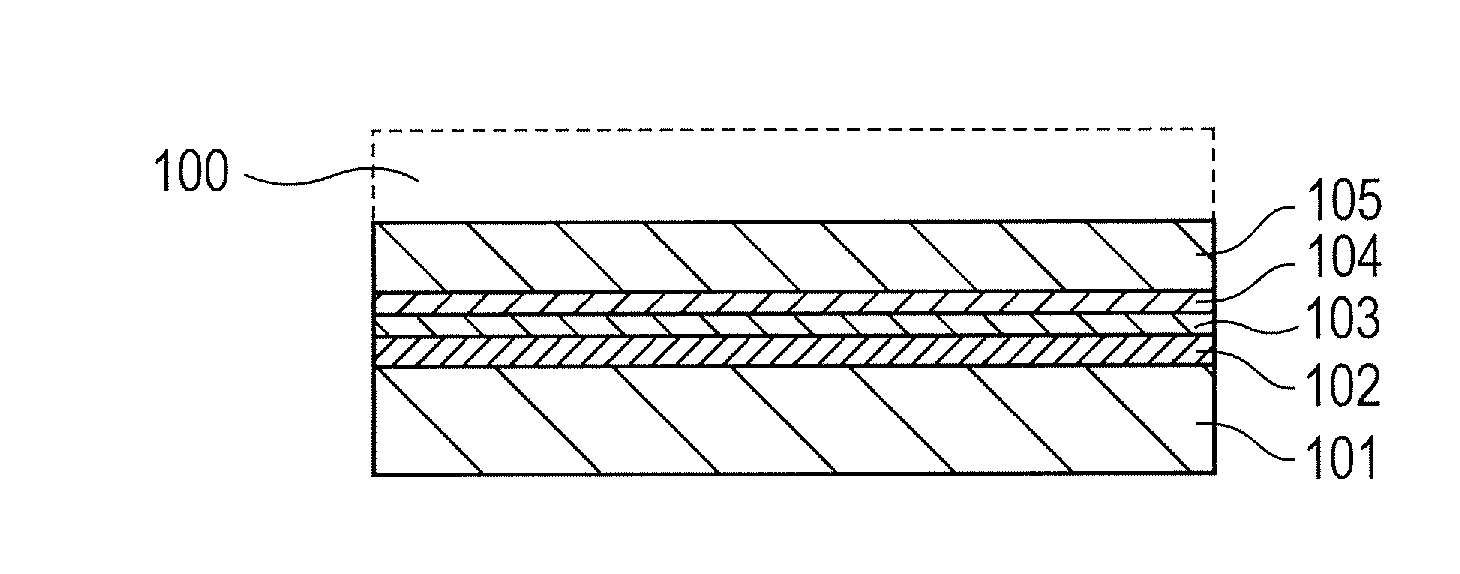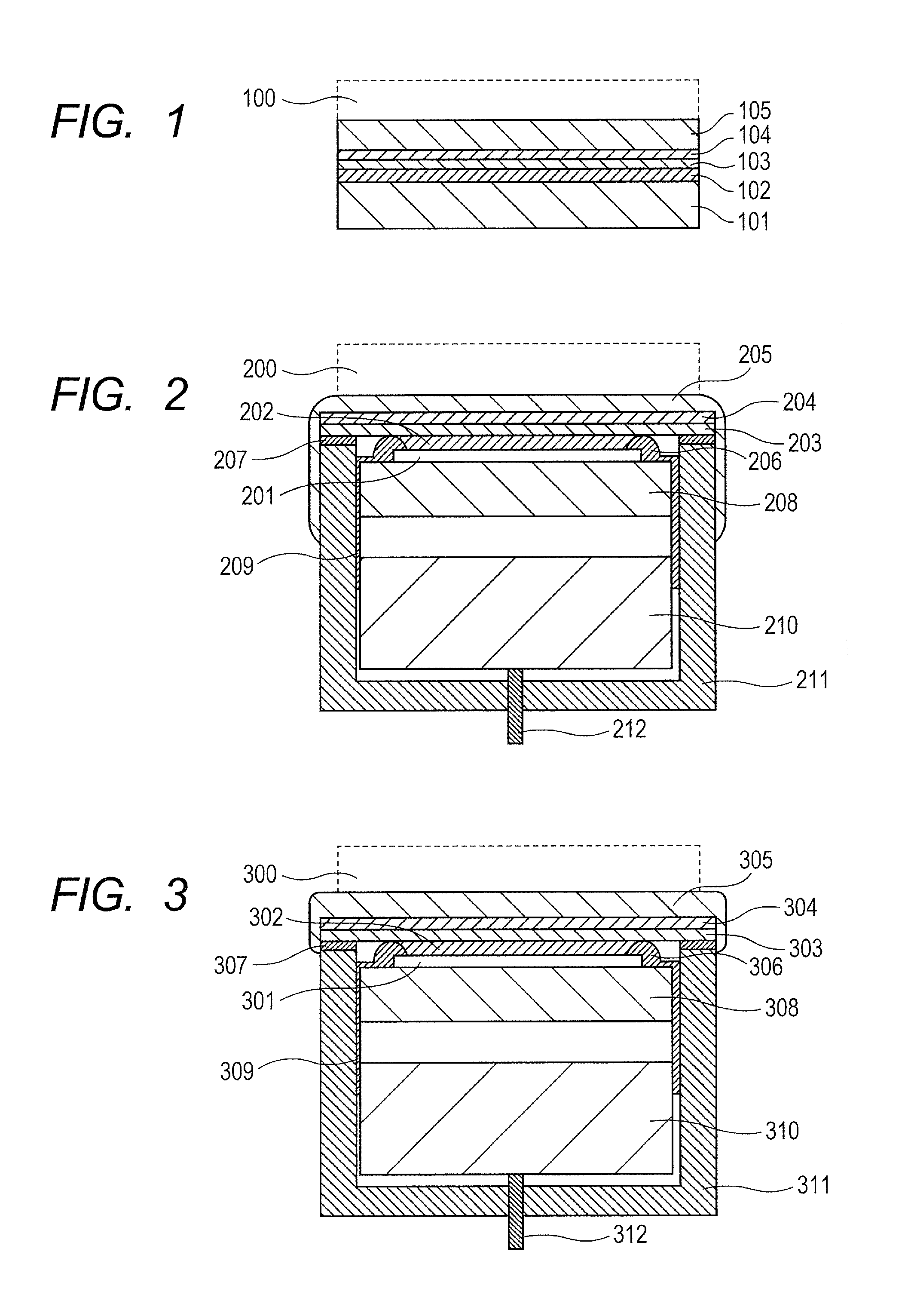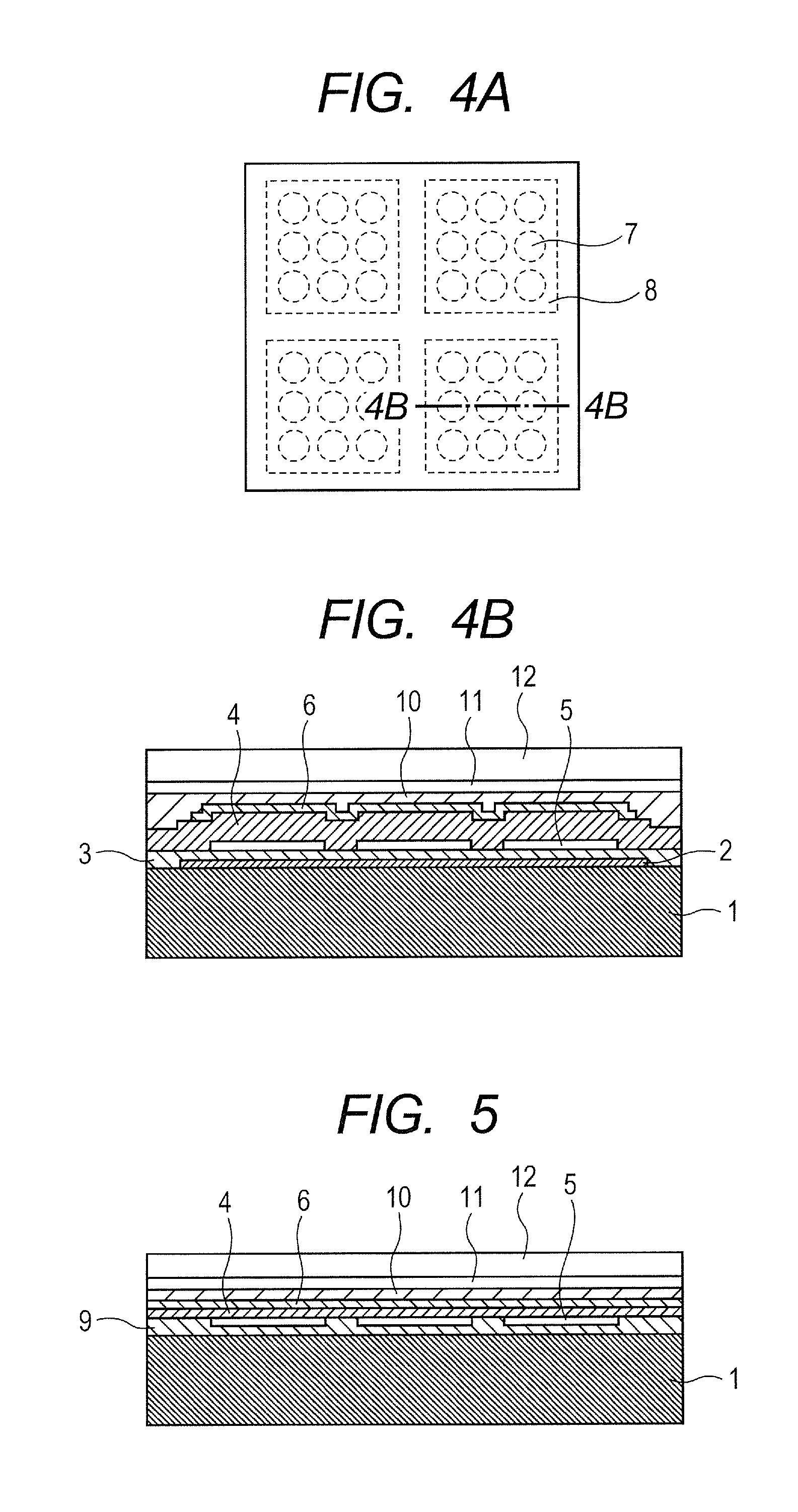Probe and object information acquisition apparatus using the same
a technology of object information and acquisition apparatus, applied in the direction of vibration measurement in solids, instruments, specific gravity measurement, etc., can solve the problems of solvent cracking, photoacoustic waves occurring as noise, stress applied to the support layer,
- Summary
- Abstract
- Description
- Claims
- Application Information
AI Technical Summary
Benefits of technology
Problems solved by technology
Method used
Image
Examples
example 1
[0034]Referring to FIG. 2, the probe of Example 1 of the present invention will be described. In this example, the protection layer is formed of paraxylene resin (parylene). A probe substrate 201 includes: a receiving part including a membrane made of any of single crystal silicon and silicon nitride on a cavity formed on the single crystal silicon substrate; and electrodes. The probe substrate 201 is fixed to the device board 208, and electrically connected to a pad (not illustrated) on the device board 208 by wire bonding. Wires and the pad are protected by seal members 206. The receiving part, which receives photoacoustic waves, has dimensions of 30 mm×20 mm, and is formed between two seal members 206. A signal of receiving photoacoustic waves from the receiving part of the probe substrate 201 is connected to a circuit 210 through a flexible substrate 209. The signal having passed through the circuit 210 is connected to the signal processor (not illustrated) through a cable 212.
[...
example 2
[0038]Referring to FIG. 3, a photoacoustic probe of Example 2 according to the present invention will be described. In Example 2, the protection layer is formed using the spraying method. Example 2 has a configuration substantially equivalent to that of Example 1. In FIG. 3, components assigned with 300s having the last two digits identical to those of 200s illustrated in FIG. 2 indicate components having functions analogous to those illustrated in FIG. 2. In this example, the spraying method is employed as a method of forming a protection layer 305. The spraying method can form polyurethane into a film having a thickness of 10 μm or less. Such a method can also exert advantageous effects equivalent to those of Example 1.
example 3
[0039]Referring to FIG. 6, a photoacoustic probe of Example 3 according to the present invention will be described. The probe of this example has a layer configuration on a vibration film as illustrated in FIG. 6. The probe has a configuration where a stress alleviation layer 402 having functions of stress alleviation and for acoustic conformity, a support layer 403, a gas barrier layer 404, an optical reflection layer 405 and a protection layer 406 are stacked on a photoacoustic probe substrate 401 including a receiving part. The stress alleviation layer 402 is formed of PDMS and has, for instance, an acoustic impedance of about 1.5 MRayls. The support layer 403 is made of polymethylpentene (TPX) and has, for instance, an acoustic impedance of about 1.8 MRayls. The gas barrier layer 404 is made of SiO2 and has a gas barrier property and moisture resistance. The optical reflection layer 405 is formed of Au / Cr. The gas barrier layer 404 and the optical reflection layer 405 are thin. ...
PUM
| Property | Measurement | Unit |
|---|---|---|
| thickness | aaaaa | aaaaa |
| light transmittance | aaaaa | aaaaa |
| thickness | aaaaa | aaaaa |
Abstract
Description
Claims
Application Information
 Login to View More
Login to View More - R&D
- Intellectual Property
- Life Sciences
- Materials
- Tech Scout
- Unparalleled Data Quality
- Higher Quality Content
- 60% Fewer Hallucinations
Browse by: Latest US Patents, China's latest patents, Technical Efficacy Thesaurus, Application Domain, Technology Topic, Popular Technical Reports.
© 2025 PatSnap. All rights reserved.Legal|Privacy policy|Modern Slavery Act Transparency Statement|Sitemap|About US| Contact US: help@patsnap.com



